Explain the characteristics of bourbon coffee explain the price of bourbon coffee beans in how many colors are there
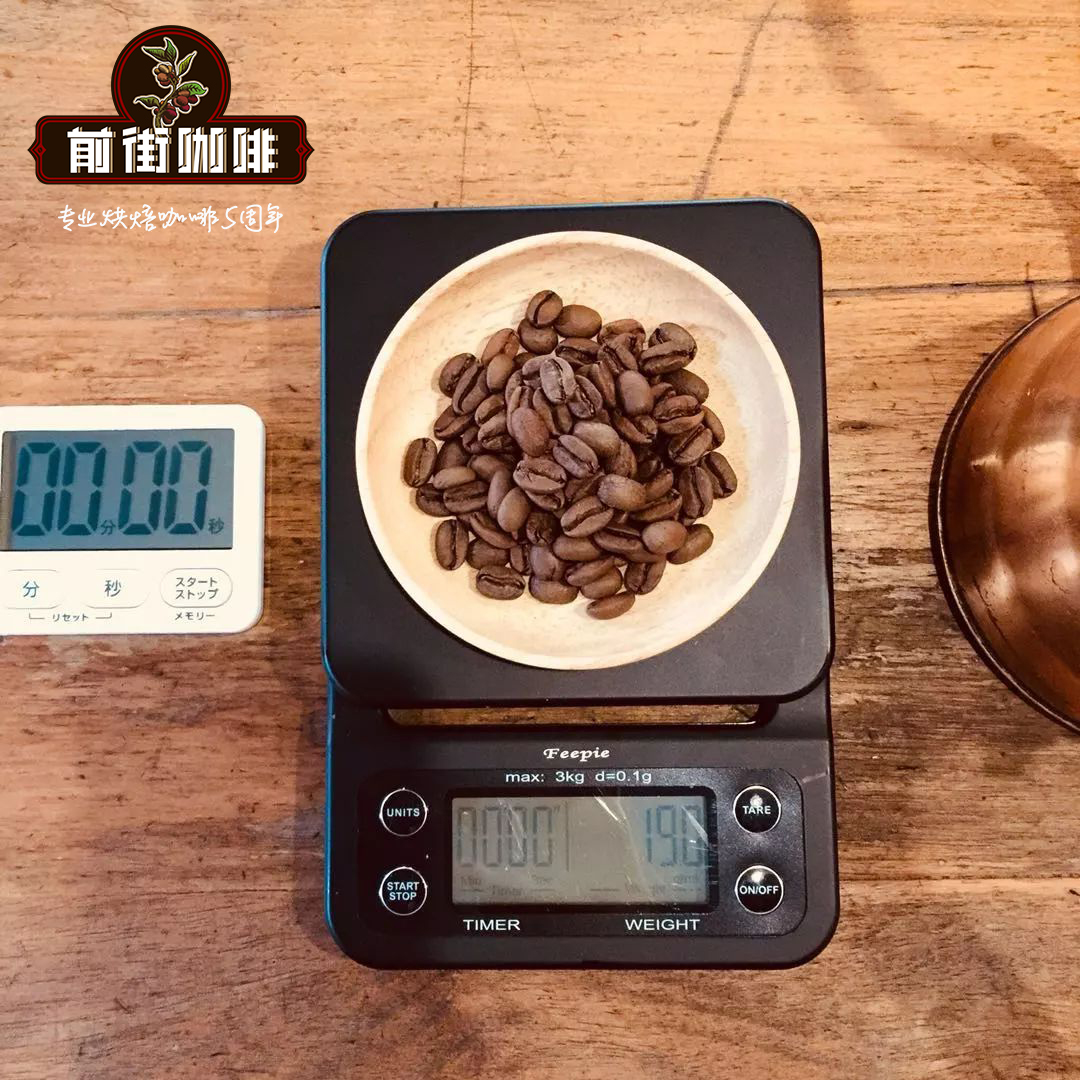
Professional coffee knowledge exchange more coffee bean information please follow the coffee workshop (Wechat official account cafe_style)
Classification of bourbon coffee beans: red bourbon, yellow bourbon, orange bourbon, pink bourbon, blue bourbon. How many colors of bourbon coffee beans have you seen?
Tell me briefly what bourbon beans are. Bourbon coffee was originally grown on the island of Reunion, which was also known as le Bourbon before 1789. Bourbon, the second species caused by the Typica mutation, is the oldest coffee variety in existence, and the green fruit appears bright red when it is ripe. The Brazilian half-sun in the Qianjie coffee rations bean series has an obvious bourbon taste, slightly sweet back to sweet fruit notes, and we can have a similar flavor in Rwanda, another small African country. It is the same bourbon variety, although the flavor details of the varieties across thousands of rivers and mountains can not be changed, so Qianjie Coffee will think that the influencing factors of fine coffee are in the following order: mouth, altitude, and treatment.
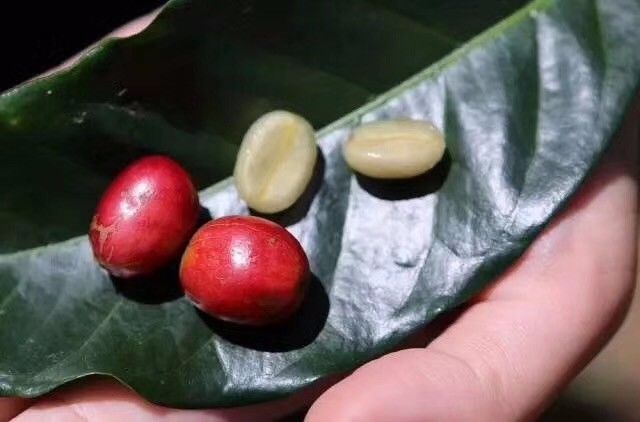
After the red bourbon general coffee tree blossoms and bears fruit, the color change of the coffee fruit is: green > turn yellowish > turn slightly orange > turn mature red > turn more ripe dark red, so some people also call it [red bourbon], in fact, red bourbon, that is, what we call bourbon species. Bourbon planted at high altitude usually has a better aroma, while the acid is brighter and even tastes like red wine.
Generally speaking, bourbon is a coffee tree that belongs to a branch of Arabica species, generally bearing red fruit, called red bourbon, in addition to yellow bourbon, orange bourbon, yellow bourbon relatively low yield, but better quality.
Bourbon Coffee Bean Story-- Transmission Route
Introduced to Brazil in 1727 because of its low yield and easy to interfere with diseases, the bourbon species was introduced to Brazil around 1860 via Campinas in the south and rapidly expanded northward to other parts of South and Central America. In Latin America today, although most of the bourbon species have been basically replaced by their varieties (especially Caturra,Catuai and Mundo Novo, etc.), bourbon is still grown in El Salvador, Guatemala, Costa Rica, Peru and other countries.
In Africa, French missionaries known as Spiritan (from the Holy Spirit) played an important role in the spread of the bourbon species. The first church was founded in Reunion in 1841 and a branch was established in Zanzibar in 1859, while from Zanzibar, a branch was established in Bagamoyo (Bagamoyo, coast of Tanzania, then known as Tanganyika) and St. Augustine (Kikuyu, Kenya) in 1862, and a branch was established in Bura (Taita Hills, Kenya) in 1893. The establishment of each chapter was accompanied by the planting of coffee seeds from Reunion.
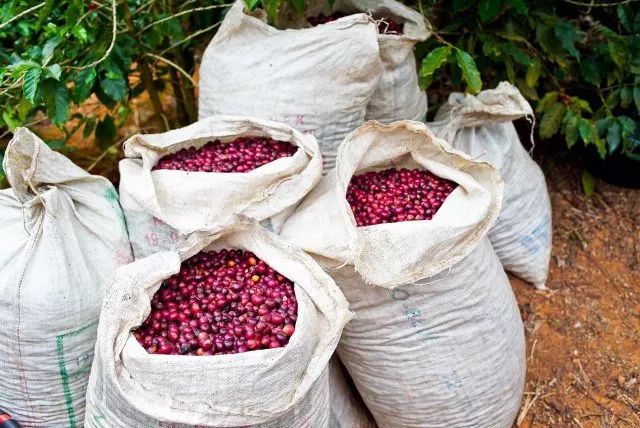
Seedlings cultivated by Bura in 1899 were brought to another French church in Santa Cruz (near Nairobi), introduced to the Kilimanjaro region of Tanzania in 1900, and distributed seeds to local residents who were willing to grow coffee. This is the origin of the so-called "missionary bourbon". Then the Kent species was introduced in 1920. Therefore, up to now, the coffee in Tanzania is mainly bourbon and Kent.
-- French Territory Bourbon Island
-- pointed Bourbon to New Caledonia Yemen in 1860
-- 1732 round bourbon to the British dependency St. Helena Island.
-- round bourbon to Brazil in 1860.
-- round bourbon to Rwanda, Kenya, Tanzania in 1900
Sharp Bourbon to Colombia after 2000.
Bourbon coffee bean variety
In the process of reproduction, many new varieties are produced due to various factors, such as natural mutation (natural mutation), intraspecific mating, artificial breeding, etc., such as Kaddura, Catuai, Pacas, yellow bourbon, sharp bourbon, SL28, SL34 and other long lists.
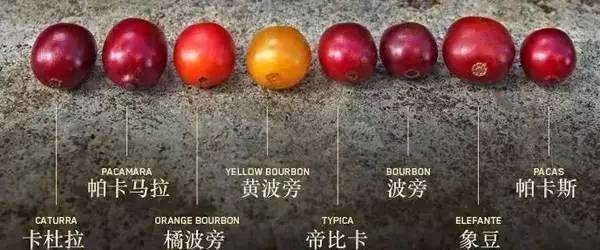
[gene mutant-bourbon variety]
Bourbon coffee beans yellow bourbon
On the other hand, the yellow bourbon species is a hybrid between the bourbon species and other varieties. Because of its low yield and relatively intolerant to wind and rain, it has not been widely planted. However, when planted in high altitude areas, it will have excellent flavor performance, which is more common in recent years. Yellow Bourbon, yellow bourbon, the ripening consequence is actually yellow, was first found in Brazil and is now grown mainly in Brazil. It is generally believed that it may have been mutated by a cross between a bourbon species with red fruit and a variety of iron pickup with yellow fruit called "Amerelo de Botocatu".
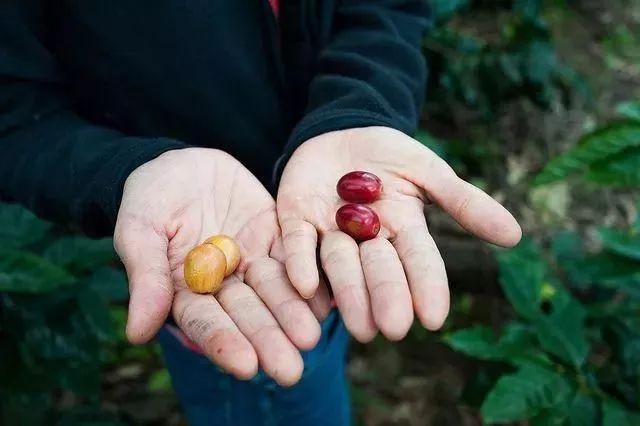
Once tried the Queen's Manor Yellow Bourbon, under the medium and deep baked taste, clean and balanced walnut taste, creamy and smooth texture coupled with sweet orange sweetness, full of mocha chocolate finish in the mouth.
Characteristics of yellow bourbon coffee beans: sweet and smooth fruit sweetness, obvious nutty flavor, balanced supple acidity, weak and clean bitterness, rich chocolate aroma and nutty flavor, bright and refreshing taste.
Bourbon coffee bean powder bourbon
Pink bourbon, as its name implies, its coffee cherries are romantic pink when ripe. It is a very rare new variety, which is bred by the cross between red bourbon and yellow bourbon. The reason why pink bourbon is rare is that it is difficult to maintain this beautiful pink, sometimes some orange bourbon will be harvested, that is because the color of coffee fruit is ultimately determined by the recessive genes in the pollen grains. Among the pollen grains we selected for hybridization, there are both yellow genes inclined to yellow bourbon and red genes inclined to red bourbon, and these are recessive genes, which are very easy to interfere with each other.
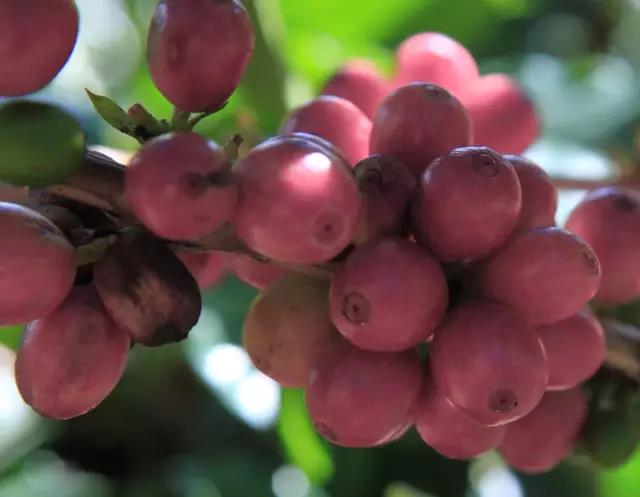
At present, pink bourbon can be seen in Colombia and Guatemala. Take this batch of pink bourbon coffee as an example, there are about 1800 coffee trees. Each tree produces about 1.8kg fresh fruit in the first production season. After peeling and pulp treatment, about 0.36kg coffee beans are obtained. In a normal production season, the output of this batch of coffee is less than 650kg.
Characteristics of pink bourbon coffee beans: sweet orange, sweet sugarcane, pleasant juice, small tomato
Bourbon Coffee Tip Bourbon
Pointed Bourbon (Bourbon Pointu): found in Bourbon Island in 1810, beans changed from round to pointed, with only half the caffeine content, but in small amounts, weak and extremely precious (mostly cultivated in the laboratory).
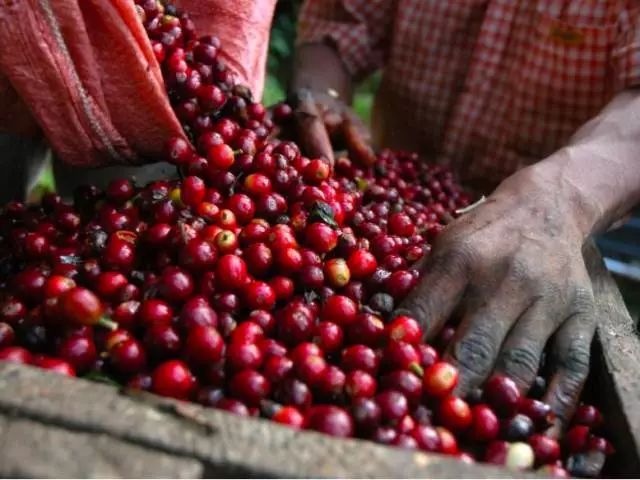
Bourbon Pointu has two other names, Laurina and Leroy, but neither is as loud as the first name. The reason why it is called sharp bourbon is that the bean shape is long and narrow and both ends are pointed, while the native species bourbon (some call it round bourbon) has a shorter bean body and a slightly oval outline.
Because of its good flavor and low caffeine content (which does not affect sleep), sharp bourbon has been popular as early as the 18th century, with many celebrities, such as French King Louise 15, and the novelist Balzac is a "fan". During the two hundred years of the 19th century, the sharp bourbon was widely planted on the island of bourbon, and its annual production reached a peak of 4,000 metric tons in 1800, but then a series of disasters such as hurricanes, fire ants and leaf rust followed, so that the planting decreased. Finally, in 1942, the last batch of sharp bourbon was shipped back to France, leaving only a pitiful 200 kilograms, and since then, sharp bourbon disappeared without a trace. Even the official documents are no longer mentioned. After the 1950s, coffee was no longer grown on Reunion, and agriculture on the island turned completely to other crops such as sugar cane. Coffee was no longer associated with Reunion, while pointed bourbon was recognized by the coffee industry as "extinct."
In view of the fact that this bean disappeared for half a century and did not reappear until eight years ago, resulting in the Bourbon pointed body from the country of origin of La Reunion Island, which sells for more than 500yuan per 100g in the international market, Colombia also began to grow this bean. Moreover, only Camilo Merizalde, which is the source of beans of many WBC champions, dared to take over the transplantation of this bean, so this coffee bean, which produces only a few tons of coffee every year, has been planted in Colombia. Worth a lot of money
Flavor description in the file: bright sour taste, blueberry, vanilla smell, velvety smoothness
Bourbon variety Pacas
Pacas (Pacas) is a natural variant of bourbon, similar to Kaddura of Brazil (Cuturrra) and Villa Sacrhi of Costa Rica. Like other bourbon variants that have been widely planted, Pacas is a new variety formed by a single gene mutation, which gives Pacas a crucial characteristic: the plant can be planted more densely, which ultimately reflects a higher unit yield.
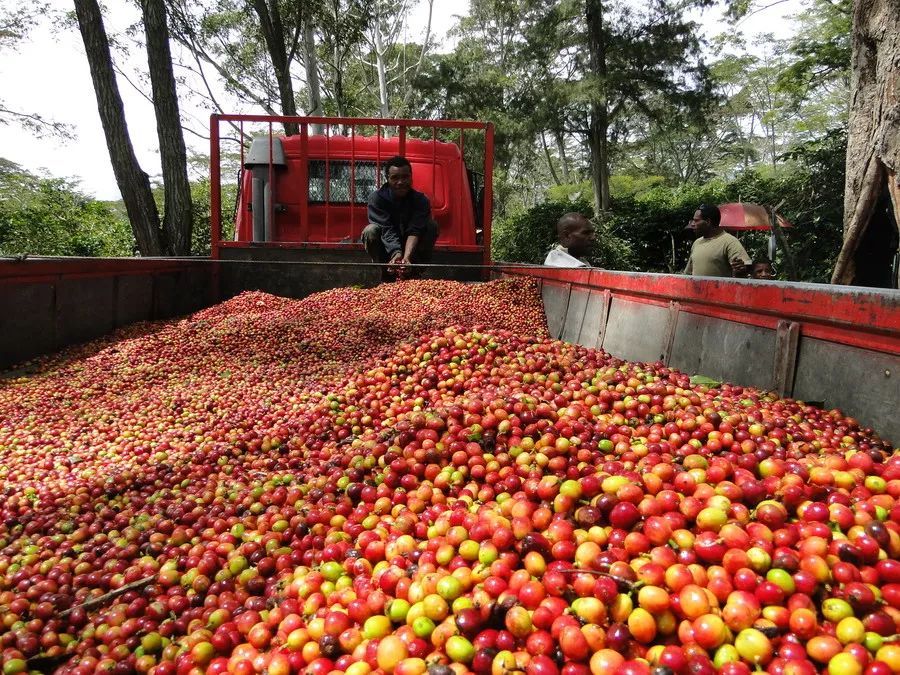
Pacas was first discovered by the Pacas family in El Salvador's Santa Ana producing area in 1949. Fernando Alberto Pacas Figuero found some different morphological plants on his family's own estate, Finca San Rafael, and then he began collecting seeds and breeding, and later developed the Pacas "Pioneer Nursery" of about 3pm 4 hectares.
Fernando Alberto Pacas Figuero, discoverer of Pacas
In 1956, Francisco de Sola and Fernando's son, Fernando Alberto Pacas Trujillo, began to study the Pacas variety with the help of Florida professor William Cogwill. They compared the bourbon species of San Ramon with an "unknown" new variety, and this "unknown" variety showed completely different characteristics, plant morphology was also different from bourbon, with shorter node spacing and larger fruiting area, and finally. They named the variety "Pacas" (Pacas).
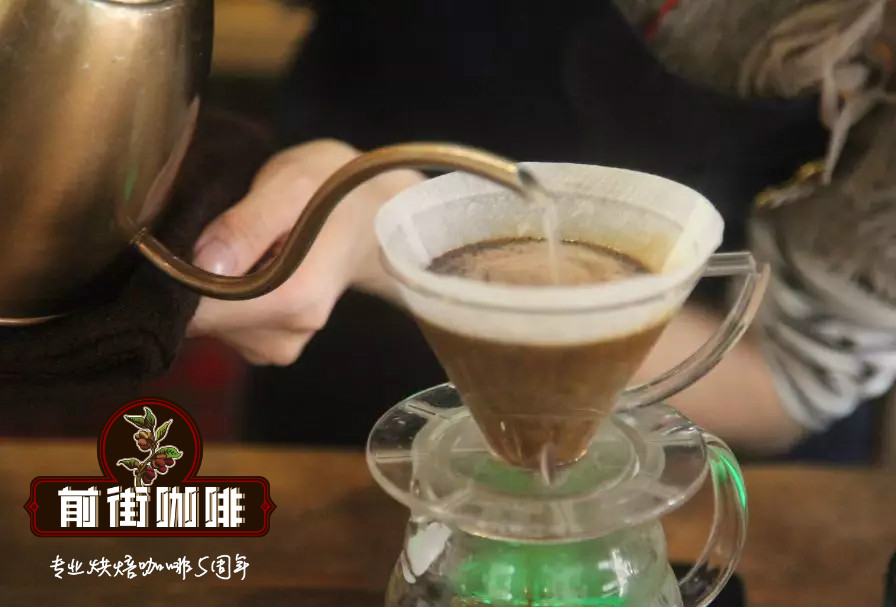
The recommended brewing parameters of Qianjie coffee are as follows: BG-6M/86-88 ℃ / KONO filter cup or V60 filter cup / 1 KONO filter cup / 15g coffee powder / steaming for 30 seconds, 225g water, total extraction time 2 minutes
Qianjie coffee compared with Brazilian yellow bourbon brewed with V60 filter cup and KONO filter cup, found that the taste boiled with V60 filter cup is slightly thinner, with soft acidity, and the whole is relatively refreshing, while the taste cooked with KONO filter cup is mellow and sweet.
END
Important Notice :
前街咖啡 FrontStreet Coffee has moved to new addredd:
FrontStreet Coffee Address: 315,Donghua East Road,GuangZhou
Tel:020 38364473
- Prev
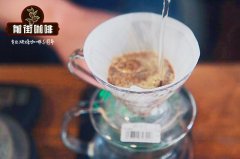
What are the changes in the characteristics and flavor of bourbon coffee from different producing areas _ how much is a pack of bourbon beans
Professional coffee knowledge exchange more coffee bean information please follow the coffee workshop (Wechat official account cafe_style) bourbon coffee bean brand recommendation: which producing area of bourbon coffee is the best? How much is the red bourbon and yellow bourbon coffee beans? After the early (prehistoric coffee) iron pickup was transplanted to Yemen, the bean shape changed from thin and pointed to round. In 1715, France transplanted the circle of the Yemeni mocha
- Next
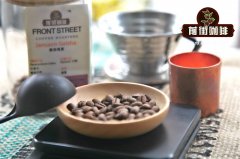
What is the characteristic flavor of Brazilian yellow bourbon coffee beans? how much is a pack of Brazilian yellow bourbon coffee beans?
Professional coffee knowledge exchange more coffee bean information Please pay attention to coffee workshop (Wechat official account cafe_style) bourbon coffee beans (French: Caf Bourbon) is a kind of coffee produced by Arabica coffee bourbon cultivation. Bourbon coffee was originally grown in Reunion, which was also known as le Bourbon Island before 1789. It was later occupied by France.
Related
- Beginners will see the "Coffee pull flower" guide!
- What is the difference between ice blog purified milk and ordinary milk coffee?
- Why is the Philippines the largest producer of crops in Liberia?
- For coffee extraction, should the fine powder be retained?
- How does extracted espresso fill pressed powder? How much strength does it take to press the powder?
- How to make jasmine cold extract coffee? Is the jasmine + latte good?
- Will this little toy really make the coffee taste better? How does Lily Drip affect coffee extraction?
- Will the action of slapping the filter cup also affect coffee extraction?
- What's the difference between powder-to-water ratio and powder-to-liquid ratio?
- What is the Ethiopian local species? What does it have to do with Heirloom native species?

